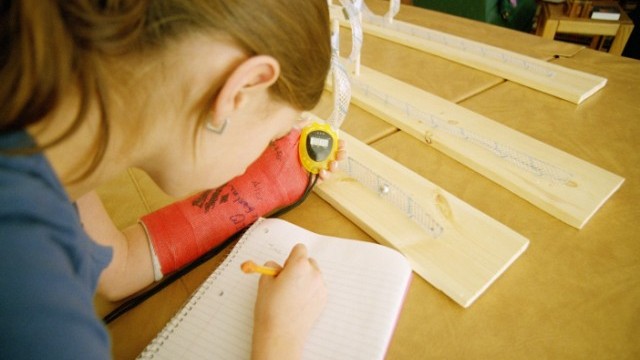
Last spring, 18-year-old Eesha Khare of Saratoga, Calif., developed a super-capacitor that can charge a cell phone in less than 30 seconds. The super-capacitor can be used for other products, too -- maybe even providing a solution for charging electric cars.
Khare, who won $50,000 in the Intel International Science and Engineering Fair for her invention, is an inspiration -- and an exception. Most American high school students aren’t leaning toward careers in math or science -- actually, they’re leaning away. A recent report by STEMconnector and My College Options shows that 60 percent of students who begin high school with an interest in science or math lose that interes by graduation. The STEM outlook for college students is worse. In a 2012 report to the President, his Council of Advisors on Science and Technology reported that, while the U.S. will need to add one million STEM workers to the workforce in the next 10 years to stay competitive, “fewer than 40 percent of students who enter college intending to major in a STEM field complete a STEM degree.”
While higher education will need to address reasons kids drop out of math and science majors, professionals in the STEM fields are stepping forward hoping to get younger kids excited enough to stay. But how to do it? One program created to inspire young scientists is Kids Tech University, a lecture series and hands-on workshop for students ages nine to 12 created by Professor Reinhard Laubenbacher at Virginia Tech’s Virginia Bioinformatics Institute. “The goal is to get kids excited about STEM,” he said. “We are not aiming to teach them any particular skills. To get kids excited, you need to introduce them to somebody who is excited already and can convey that excitement.”
The program strives to create a university experience, having children gather in a university lecture hall, then follow up with a hands-on lab or activity. And Laubenbacher said scientists passionate about their field do a great job of conveying the ambiguity of research, which kids like. “KTU excites children by showing them actual research, with all its messiness and all the open questions that nobody knows an answer to," he said. "Kids respond to that tremendously, very different from how they correspond to a science class. School teachers, even the very best ones, cannot do that, since they are not scientists and do not have the same passion for the subject, typically. If somebody shows you how environmental toxins can turn a male frog into a female frog, and how this might be responsible for many cancers of the reproductive system, but how it is not entirely clear yet, that gets kids worked up.”

